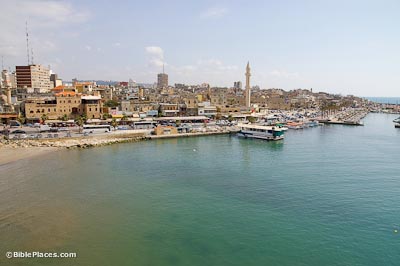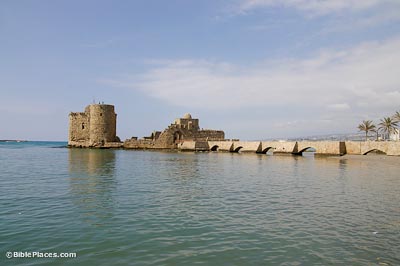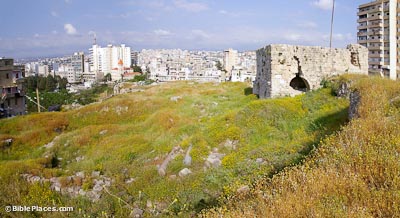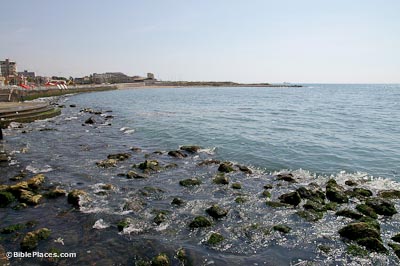Most of ancient Sidon lies buried beneath the modern city of Saida. The ancient city covered an area of about 40 acres, from the Castle of St. Louis on the south to the harbor on the north. People came from Sidon to hear Jesus’s teaching, and later he travelled through the territory of Sidon (Mark 3:8; 7:31).
Sidon

Modern City
Sea Castle
The Sea Castle completely covers an offshore rock at the entrance to Sidon’s northern harbor. It is thought that this island was the site of an earlier temple dedicated to the Phoenician god Melqart. The castle was constructed by the Crusaders in 1227–1228, and was later altered from dismantling by the Mamluks, from rebuilding by local rulers, and by the British bombardment in 1840.


Castle of St. Louis
The Castle of St. Louis was constructed by the Crusaders in 1110–1187. It was named for Louis IX of France who led the 7th and 8th Crusades. There is no evidence that Louis IX ever stayed at Sidon. The Castle of St. Louis is also known as the Land Castle, to differentiate it from the smaller Sea Castle.
Egyptian Harbor
Sidon had two main harbors: the northern harbor, and the Egyptian, or southern, harbor. Only the northern harbor continues in use today. The Egyptian harbor is a semi-circular bay. There is no evidence that harbor-works (quays, jetties, moorings) were constructed here.


Download all of our Lebanon photos!
$34.00 $49.99 FREE SHIPPING
Related Websites
See also Tyre and Zarephath. For historical images of Sidon, see Life in the Holy Land.
Sidon (World History Encyclopedia) Offers a good historical summary and a few pictures of relevant reliefs.
Sidon (Livius) This page has lots of historical information and many photos.
Biblical Sidon—Jezebel’s Hometown (Bible History Daily) An excerpt of a Biblical Archaeology Review article. Its photos have detailed captions.
Sidon (MiddleEast.com) Describes the site’s history, as well as its major points of interest.
Ancient Sidon: Sifting Through the City’s Deadly History (The Independent) This article discusses modern archaeological efforts at the site. It’s worth looking at, especially for the photos.
The Biblical Cities of Tyre and Sidon (Associates for Biblical Research) This 2002 article gives a fairly comprehensive history of the two cities.